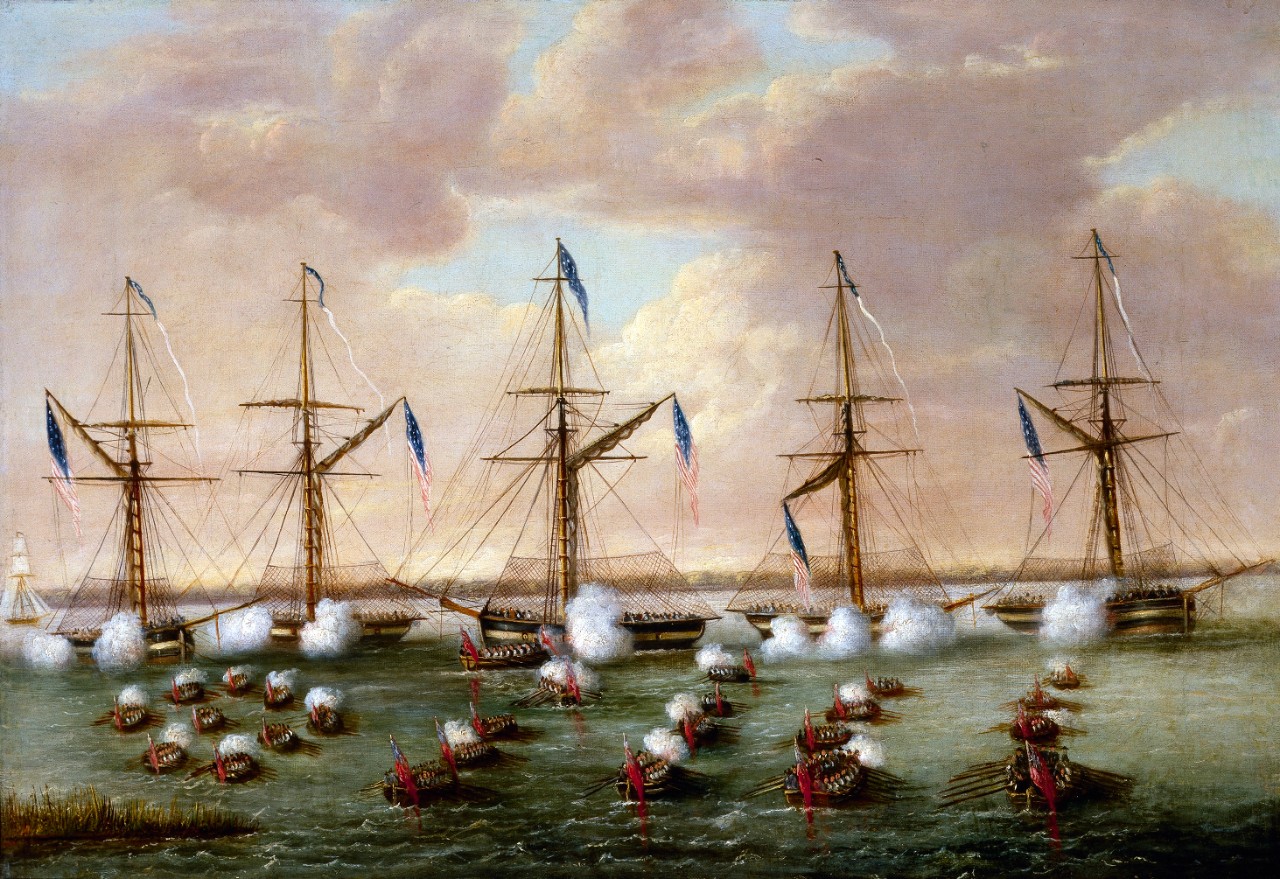The Naval War of 1812: A Documentary History
Capturing that sweep of the Navy’s 1812 history is the goal of The Naval War of 1812: A Documentary History, a series originally conceived in 1978 and researched and written over more than four decades. The first volume of the series treats events of the war through 1812, the second through 1813. Volume III examines the final 14 months of the conflict on the Northern Lakes, Chesapeake Bay, and Pacific Ocean theaters. The final volume of the series surveys the war at sea for the Atlantic and Gulf Coast theaters in 1814 and 1815.
- Volume I: 1812 (prelude to war, Atlantic, Northern Lakes, Gulf Coast), edited by William S. Dudley, published 1985, PDF (12 MB)
- Volume II: 1813 (Atlantic, Chesapeake Bay, Northern Lakes, Gulf Coast, Pacific), edited by William S. Dudley, published 1992, PDF (17 MB)
- Volume III: 1814-1815 (Northern Lakes, Chesapeake Bay, Pacific), edited by Charles E. Brodine, Jr., and Christine F. Hughes, published 2002, PDF (18 MB)
- Volume IV: 1814-1815 (Atlantic, Gulf Coast), edited by Charles E. Brodine, Jr., and Christine F. Hughes, published 2023, 508-compliant PDF (20 MB)
On 18 June 1812, the United States declared war on the United Kingdom of Great Britain and Ireland to defend its rights as a neutral maritime nation. The contemporary expression “Free Trade and Sailors’ Rights” pithily captures the ideals the American government sought to protect by force of arms in 1812. Ironically, the Madison administration envisioned little role for the U.S. Navy in winning this war fought for freedom of the seas. Instead, it trusted that the quick seizure of Upper Canada by U.S. regulars and militiamen, coupled with a robust privateering campaign against Britain’s oceanic trade, would secure an easy American victory. These hopes were soon dashed by the U.S. military’s failed attempts to invade Canada in the summer and fall of 1812. For this reason, and others, President Madison recognized that the war against Britain could not be won without the contributions of the infant republic’s sea service.
Although government leaders may have considered the Navy an afterthought at the beginning of the war, a string of stirring ship-to-ship victories by U.S. warships between August and December of 1812 catapulted the nation’s sea service into the consciousness of an admiring public. The Navy’s triumphs continued through each year of the war, with two in particular—the battles of Lake Erie and Plattsburgh Bay—yielding important strategic results in favor of the United States. At war’s end, Navy sailors helped rout an invading British army at the Battle of New Orleans, preserving Louisiana’s state capital from enemy occupation.
This record of combat success, though impressive, represents just a part of the U.S. Navy’s 1812 story. The Navy also performed valuable service in defending the nation’s maritime frontier, in protecting American seaborne trade, and in providing logistical and tactical support to the U.S. Army. In addition to these accomplishments, one must also note that the Navy experienced its own share of wartime frustrations, setbacks, and humiliating defeats. Taken as a whole, then, the U.S. Navy’s role in waging the War of 1812 was complex, wide-ranging, and eventful.
For well over a century, the Navy Department has supported the publication of documentary editions that capture its operational history. Of the nation’s military services, the Navy stands alone in publishing its history in this unique format. The Naval History and Heritage Command and its predecessor offices have published, and will continue to publish, records relating to the Navy’s role in major conflicts. These collections make available documents that tell a fuller, more detailed and nuanced story of the fighting Navy than any narrative history can capture.
Related Resources
Publication Fact Sheet (1 MB pdf download)
Publication Informational Postcard (371 KB pdf download)



